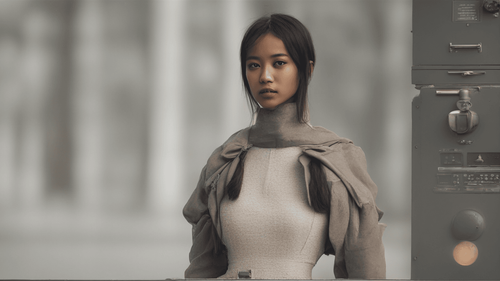
Introduction: Unleashing Creativity and Efficiency through AI Image Generation
In today's rapidly evolving technological landscape, artificial intelligence (AI) continues to reshape industries, fueling innovation and efficiency in unprecedented ways. One of the remarkable applications of AI is image generation, a technology that harnesses the prowess of algorithms to create stunning visuals, revolutionizing industries such as design, entertainment, and marketing. In this comprehensive guide, we delve deep into the realm of AI image generation, exploring its benefits, methodologies, real-world applications, and potential impact on the future.
AI Image Generation: Redefining Visual Creativity
AI image generation, often referred to as Generative Adversarial Networks (GANs), marks a monumental leap in the world of digital artistry. These sophisticated algorithms possess the ability to autonomously produce images that mimic the style, texture, and composition of human-generated art. Through complex mathematical models and intricate data analysis, AI image generation has unlocked new dimensions of creative expression, challenging conventional notions of human-exclusive creativity.
How AI Image Generation Works: Unraveling the Algorithmic Magic
At the heart of AI image generation lies the interplay between two neural networks: the generator and the discriminator. The generator crafts images from scratch, striving to produce content that is indistinguishable from authentic human creations. Meanwhile, the discriminator evaluates these AI-generated images alongside real images, enhancing its ability to differentiate between the two. This iterative process of feedback and adjustment refines the AI's skills, ultimately resulting in images that captivate the human eye.
Advantages of AI Image Generation
1. Unbounded Creativity and Exploration
AI image generation shatters the boundaries of artistic exploration. Artists and designers can experiment with diverse styles, genres, and techniques without constraints. This technology serves as a wellspring of inspiration, enabling creators to push their imaginative boundaries and unearth new artistic frontiers.
2. Accelerated Design Iterations
In industries like graphic design and fashion, rapid iterations are crucial. AI image generation expedites the design process by generating multiple options in a fraction of the time it would take a human artist. This not only enhances efficiency but also empowers designers to refine their concepts more comprehensively.
3. Personalization and Customization
Marketers and advertisers leverage AI-generated images to create tailored content that resonates with individual consumers. By analyzing user preferences and behavior, AI adapts visuals to create a personalized experience, fostering stronger brand-consumer connections.
4. Cost-Efficiency and Resource Optimization
Traditionally, commissioning artwork or conducting elaborate photoshoots incurred significant costs. AI image generation eliminates these expenses, making high-quality visuals accessible to businesses and individuals alike, democratizing the creative process.
5. Breaking Language Barriers
Visual communication transcends linguistic barriers. AI-generated images have the potential to bridge communication gaps, enabling effective conveyance of ideas and concepts across cultures and languages.
Real-World Applications of AI Image Generation
1. Entertainment and Gaming Industry
AI image generation has transformed character design, world-building, and visual storytelling in the gaming industry. Game developers utilize AI-generated graphics to enhance gameplay environments, create lifelike characters, and craft immersive narratives that captivate players.
2. Fashion and Apparel Design
Fashion designers leverage AI image generation to prototype and visualize clothing designs. By generating photorealistic renderings of garments, designers can assess the look and fit of their creations before producing physical samples.
3. Architectural Visualization
Architects and urban planners harness AI-generated images to create detailed visualizations of buildings and urban landscapes. This technology aids in conveying design concepts to clients, investors, and stakeholders with remarkable clarity.
4. Medical Imaging and Research
In the field of medical imaging, AI image generation plays a pivotal role in generating detailed and accurate representations of anatomical structures. This aids healthcare professionals in diagnosis, treatment planning, and medical research.
5. Marketing and Advertising
AI-generated visuals have revolutionized marketing campaigns by enabling brands to create attention-grabbing and emotionally resonant content. Advertisers can tailor images to evoke specific emotions, enhancing the overall impact of their messaging.
FAQs: Demystifying AI Image Generation
Is AI Image Generation Limited to Visual Artistry?
AI image generation extends beyond visual artistry. While it is widely used in creative fields like design and entertainment, its applications span industries such as healthcare, architecture, and marketing.
Can AI-Generated Images Replace Human Creativity?
AI-generated images complement human creativity but do not replace it. These images serve as tools that aid and inspire human artists, pushing the boundaries of what's creatively possible.
Are AI-Generated Images Always Realistic?
AI-generated images range from realistic to surreal, depending on the input data and desired outcomes. They can mimic reality or produce abstract and fantastical visuals, offering a diverse array of creative possibilities.
Is AI Image Generation Ethically Concerning?
Ethical considerations arise in AI image generation, particularly regarding intellectual property, privacy, and potential misuse. It's essential for creators and policymakers to establish ethical frameworks that guide its responsible use.
What's the Role of Human Oversight in AI Image Generation?
Human oversight is crucial in refining AI-generated images. While algorithms contribute significantly, human artists and designers provide direction, judgment, and emotional nuance that elevate the final output.
Will AI Image Generation Replace Traditional Photography?
AI image generation complements traditional photography but is unlikely to fully replace it. Both forms of visual creation coexist, each offering distinct advantages and serving different creative needs.
Conclusion: Pioneering a Creative Revolution with AI Image Generation
AI image generation stands at the forefront of a creative revolution, empowering artists, designers, and innovators to explore uncharted territories of visual expression. As technology advances and AI algorithms become more sophisticated, the possibilities for creativity and innovation are boundless. While challenges and ethical considerations persist, the transformative impact of AI image generation on industries and human imagination is undeniable. Embracing this powerful tool, we usher in an era of enhanced creativity, efficiency, and artistic ingenuity.